The Indian government introduced the Pradhan Mantri Jan Dhan Yojana (PMJDY) financial inclusion initiative in August 2014.
This program aims to give all households in the nation access to financial services, especially those who were previously shut out of the formal banking system.
The Pradhan Mantri Jan Dhan Yojana's main characteristics are:
Financial Inclusion: The main goal is to guarantee that each Indian household has access to at least one bank account.
The program offers zero-balance bank accounts, which let people open accounts without having to keep a certain minimum balance.
Basic banking services: Account users receive a RuPay debit card that allows for cashless transactions and ATM withdrawals.Basic banking services: Account users receive a RuPay debit card that allows for cashless transactions and ATM withdrawals.Accidental Insurance: Under the RuPay card program, account holders are entitled for accidental insurance coverage.
Account holders may use an overdraft facility up to a predetermined amount after their account is activated and satisfactory transactions have been conducted.
Direct Benefit Transfer (DBT): The Jan Dhan Yojana assists in facilitating direct benefit transfers of grants and other government welfare programs to the recipients' bank accounts. Pension Plans: The program also enables beneficiaries to sign up for several government pension plans.
One of the largest financial inclusion projects in the world, the Pradhan Mantri Jan Dhan Yojana has helped millions of people get access to the formal banking system, thereby enhancing financial access and fostering financial literacy. Please take note that I suggest checking for the most recent updates and developments surrounding this scheme in India as my information may be out of date.
The Indian government introduced the Pradhan Mantri Jan Dhan Yojana (PMJDY) financial inclusion initiative in 2014. Its main objective is to give every household in India access to a bank account and other perks like debit cards, insurance, and zero-balance accounts. The program also provides access to pension plans and permits direct benefit transfers. In order to promote financial inclusion and wellbeing, PMJDY has been crucial in bringing millions of previously unbanked people into the official banking system.
The Pradhan Mantri Jan Dhan Yojana (PMJDY) has made tremendous progress toward promoting financial inclusion in India since its launch in 2014. The program has helped millions of formerly unbanked people gain access to fundamental banking services and financial products.
Among PMJDY's major accomplishments are the following
Broad Reach: The plan has been successful in integrating millions of households into the established banking system, greatly raising the proportion of people who have access to bank accounts.
Zero-amount Accounts: Thanks to PMJDY, it is now simpler for marginalized and economically underprivileged groups in society to create and maintain bank accounts because there is no requirement to keep a minimum amount. Financial literacy: The program has placed a strong emphasis on the value of having account holders be financially literate and aware in order to help them make better financial judgments and decisions. Direct Benefit Transfer (DBT): PMJDY has made it possible for the direct transfer of government grants and welfare benefits to recipients' bank accounts, resulting in a more effective and open administration of social assistance programs. Overdraft Facility: The availability of an overdraft facility has given account holders a safety net during emergencies by enabling them to access credit and handle unanticipated costs.
Increased Insurance Coverage: Many vulnerable people now feel more secure financially in the event of unforeseen events thanks to the accidental insurance coverage offered by RuPay debit cards.
Enrollment in pension plans has been made simpler thanks to PMJDY, allowing senior folks to obtain their pension benefits through their bank accounts.
The Pradhan Mantri By providing them with access to formal financial services, the Jan Dhan Yojana has been crucial in empowering people and households, particularly those from economically disadvantaged backgrounds. The program has been significant in India's progress toward an economically inclusive society by enhancing financial inclusion and fostering a cashless economy. As the government and financial institutions collaborate to increase the scheme's scope and effectiveness, the impact of PMJDY keeps changing.
Pradhan Mantri Jan Dhan Yojana has certain difficulties notwithstanding its success. Making sure the accounts are active and properly used is one of the biggest challenges. Many people, particularly in rural areas, might not regularly trade or might not fully comprehend how to maximize their bank accounts. Consequently, financial literacy training are still essential to boosting the program's efficacy.
The digital gap in India is yet another difficulty. Even though PMJDY wants to encourage digital transactions, not all beneficiaries have easy access to cellphones or the internet, which prevents them from fully utilizing digital banking services. To fully utilize financial inclusion and digitization, it is imperative to close this digital gap.
The administration has been working consistently to enhance PMJDY in order to build on its achievements. This entails extending the availability of banking services to more rural regions, launching fresh financial products suited to the needs of the recipients, and promoting the use of digital banking platforms.
Increasing financial inclusion is essential for boosting economic growth and eradicating poverty. PMJDY has the ability to increase savings, encourage investments, and foster entrepreneurship by enticing more people to use formal banking services, hence advancing India's economy as a whole.
Long-term goals guide the Pradhan Mantri Jan Dhan Yojana, a current project.
The Indian government, along with different financial institutions and stakeholders, may keep working to improve the efficacy and impact of the program in the following ways:
Strengthening Financial Literacy: Account holders must have better financial literacy if they are to comprehend the program's advantages and be able to manage their money wisely. Beneficiaries may benefit from ongoing efforts to inform them about various banking services and online transactions so they can use their accounts more wisely.
Increasing Financial Services: To meet the varying demands of the public, there may be efforts to increase the number of financial services and products that are appropriate for various societal groups. For instance, Jan Dhan accounts can provide access to investment opportunities, micro-insurance plans, and lending packages specifically designed for small companies. Closing the Digital Divide: Closing the digital divide is still necessary to fully realize the potential of financial inclusion. More beneficiaries may be empowered to accept digital banking services through initiatives to provide affordable internet connection and digital training in rural regions, hence encouraging financial inclusion and a cashless society. Encourage Active Usage: Maintaining active accounts that are routinely utilized is essential to the long-term viability of the plan. This can be accomplished by rewarding account usage, encouraging regular transactions, and encouraging saving behaviors.
Analyzing data from Jan Dhan accounts and transactions might give important insights into recipients' spending patterns and needs. This data can be used by policymakers to improve the program and modify it to better serve the intended audience.
Collaboration with Financial Institutions: The reach and effectiveness of the program can be improved by working with banks, microfinance organizations, and other financial intermediaries. These collaborations may result in ground-breaking solutions that meet the particular needs of distinct communities. Monitoring and Evaluation: It is crucial to routinely track the development and impact of the scheme. Periodic evaluations can assist pinpoint areas that could use improvement and confirm that the program is accomplishing its intended goals.
In addition to the government's efforts, the Pradhan Mantri Jan Dhan Yojana depends on the involvement and engagement of other stakeholders, such as financial institutions, technological companies, and civil society organizations. For the scheme's beneficial effects on financial inclusion to continue and grow in India, collaboration will be essential. I advise consulting official government sources and news organizations for the most recent information on the plan and any potential upcoming developments.
Future Potential Developments
Inclusive Financial Services: The government may keep putting effort into expanding access to and inclusivity of financial services for all facets of society. This could entail the introduction of new financial services and products designed to meet the requirements of particular demographics, such farmers, women business owners, and small firms.
Enhanced Digital Infrastructure: The government may make investments to upgrade the digital infrastructure in rural and isolated areas in an effort to close the digital gap. To enable beneficiaries to properly use digital financial services, this might entail boosting digital literacy initiatives, increasing banking kiosks, and improving internet connectivity. Social Security Programs: To increase the benefits received by PMJDY account holders, other social security programs may be linked to the scheme. For greater coordination and targeted assistance, this might entail linking other government programs for health, education, and jobs with the Jan Dhan accounts.Initiatives for Financial Education: Maintaining the focus on financial literacy programs will help people better understand and manage their finances. To conduct awareness campaigns and training sessions on financial planning and budgeting, the government may work in conjunction with non-governmental organizations (NGOs), neighborhood associations, and financial institutions. Enhancing Data Analytics: Better policy and strategic decision-making could be achieved by using the data gathered from Jan Dhan accounts. The government can pinpoint areas for improvement and tweak the plan to optimize its impact by examining transaction trends and usage habits.
Challenges and Things to Think About
Sustainability: It's crucial to ensure the long-term viability of the plan. Its success will depend heavily on ongoing funding, efficient implementation, and flexibility in light of shifting conditions.
Managing Inactive Accounts: One difficulty is persuading account holders to use their Jan Dhan accounts frequently. This problem might be solved by rewarding transactions, providing rewards, or adding extra benefits for active usage.Cybersecurity and Fraud Prevention: As the number of digital transactions rises, the government must bolster its cybersecurity protocols and fraud defenses to protect beneficiaries' accounts.Marginalized groups' financial inclusion: Even though PMJDY strives to be inclusive, some marginalized groups could still encounter obstacles when trying to obtain formal financial services. Addressing the particular difficulties that these communities experience might require special consideration.Adaptation to Technological Advancements: The PMJDY's continued relevance and effectiveness will depend on how well it can keep up with the continuously changing nature of technology and digital advancements.
The Pradhan Mantri The Jan Dhan Yojana has been a key step toward financial inclusion in India, and its success will be reliant on ongoing efforts, stakeholder cooperation, and the capacity to adjust to shifting demands and difficulties. I suggest consulting legitimate news media and official government sources for the most recent information on the scheme's progress and specific events.
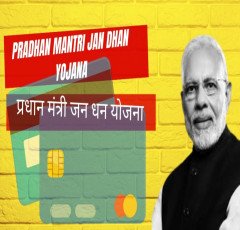

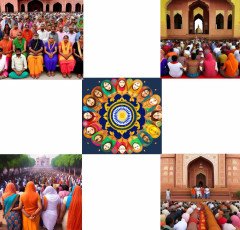




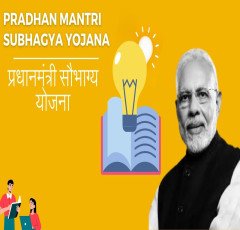
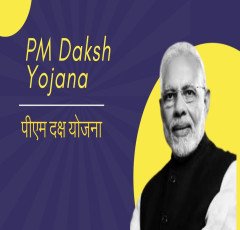




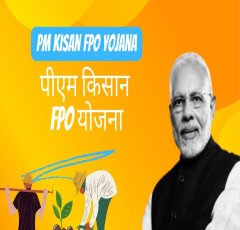










 SOFAS
SOFAS  Essentials for Gamers
Essentials for Gamers  Digital Voice Recorder
Digital Voice Recorder  Men Clothing
Men Clothing  4k Projector For Home
4k Projector For Home  Amazon Best Selling Products
Amazon Best Selling Products  Wireless Gaming Mouse
Wireless Gaming Mouse  Wireless Bluetooth Earphones
Wireless Bluetooth Earphones  Prime Video
Prime Video  Motion Sensor Light
Motion Sensor Light  Apple iPhone
Apple iPhone  Only For The United States
Only For The United States  Sennheiser
Sennheiser  The Click Engine
The Click Engine  Echo Dot - Smart speaker with Alexa
Echo Dot - Smart speaker with Alexa  ELECTRONIC ACCESSORIES
ELECTRONIC ACCESSORIES  NordLocker
NordLocker  iPhone cable
iPhone cable  Dual USB Car Charger
Dual USB Car Charger  Acer Laptop
Acer Laptop  Air Purifier for Home
Air Purifier for Home  Favorite Company (Cuelinks)
Favorite Company (Cuelinks)  Home Decor Items
Home Decor Items  BEST SELLER TOP10
BEST SELLER TOP10  Pet Care Products
Pet Care Products  Puma (Clothing & Accessories)
Puma (Clothing & Accessories)  Smart Watches
Smart Watches  Adidas Shoes
Adidas Shoes  Best Robotic Vacuum Cleaners
Best Robotic Vacuum Cleaners  Healthy Ingredients
Healthy Ingredients  1150+Trendy kids coloring pages Bundle
1150+Trendy kids coloring pages Bundle  SEO Checklist
SEO Checklist  Top Rated From Amazon
Top Rated From Amazon  Online Marketing
Online Marketing  Graphics & Design
Graphics & Design  Creative Brief For Video Shoot
Creative Brief For Video Shoot  Hot Bags For Pain Relief
Hot Bags For Pain Relief  Women Fashion
Women Fashion  Online Technology Classes
Online Technology Classes  Kitchen Daily Use
Kitchen Daily Use  HP Laptop
HP Laptop  ASUS Laptop
ASUS Laptop  Best Selling Books
Best Selling Books  Artificial Intelligence
Artificial Intelligence  Door Handle Collection
Door Handle Collection  Realme Smart Phone
Realme Smart Phone  Duke T Shirts
Duke T Shirts  TitTok Revolution
TitTok Revolution  Unlimited access to classes on illustration, photography, design, film, music
Unlimited access to classes on illustration, photography, design, film, music  Dell Laptop
Dell Laptop  Kitchen Tap
Kitchen Tap  NordVPN
NordVPN  Crocs
Crocs  Best Phone
Best Phone  Best Home Appliances
Best Home Appliances  LCD Writing Tablet
LCD Writing Tablet  Stylish Sneakers by Red Tape
Stylish Sneakers by Red Tape  Bathroom Mirrors
Bathroom Mirrors  Hanging Lights For Living Room
Hanging Lights For Living Room  One World Collection
One World Collection  Wall Lamp
Wall Lamp  All Wireless Products
All Wireless Products  Unreal Engine 5 For Beginners Learn The Basics Of Virtual Production
Unreal Engine 5 For Beginners Learn The Basics Of Virtual Production  NordPass
NordPass  Smart Doorbell
Smart Doorbell  Rakhi
Rakhi  ASPINAL LONDON
ASPINAL LONDON  Samsung Mobile
Samsung Mobile  Hello Theme
Hello Theme  RPM 3.0
RPM 3.0  The Secret Email System
The Secret Email System  Wristbands
Wristbands  Best Sellers On Amazon
Best Sellers On Amazon 


















